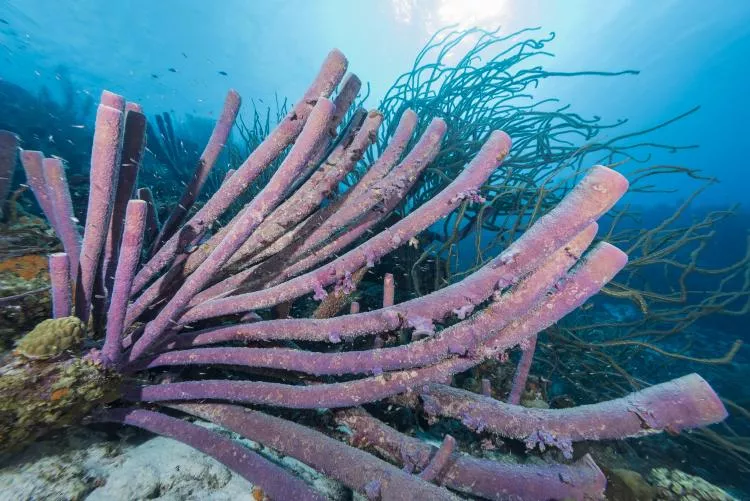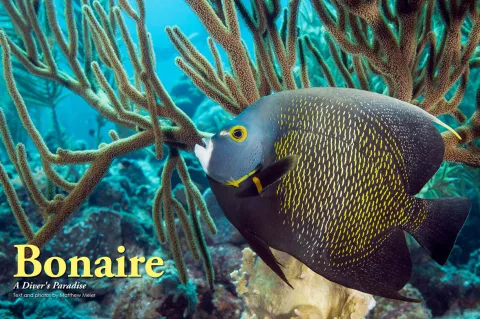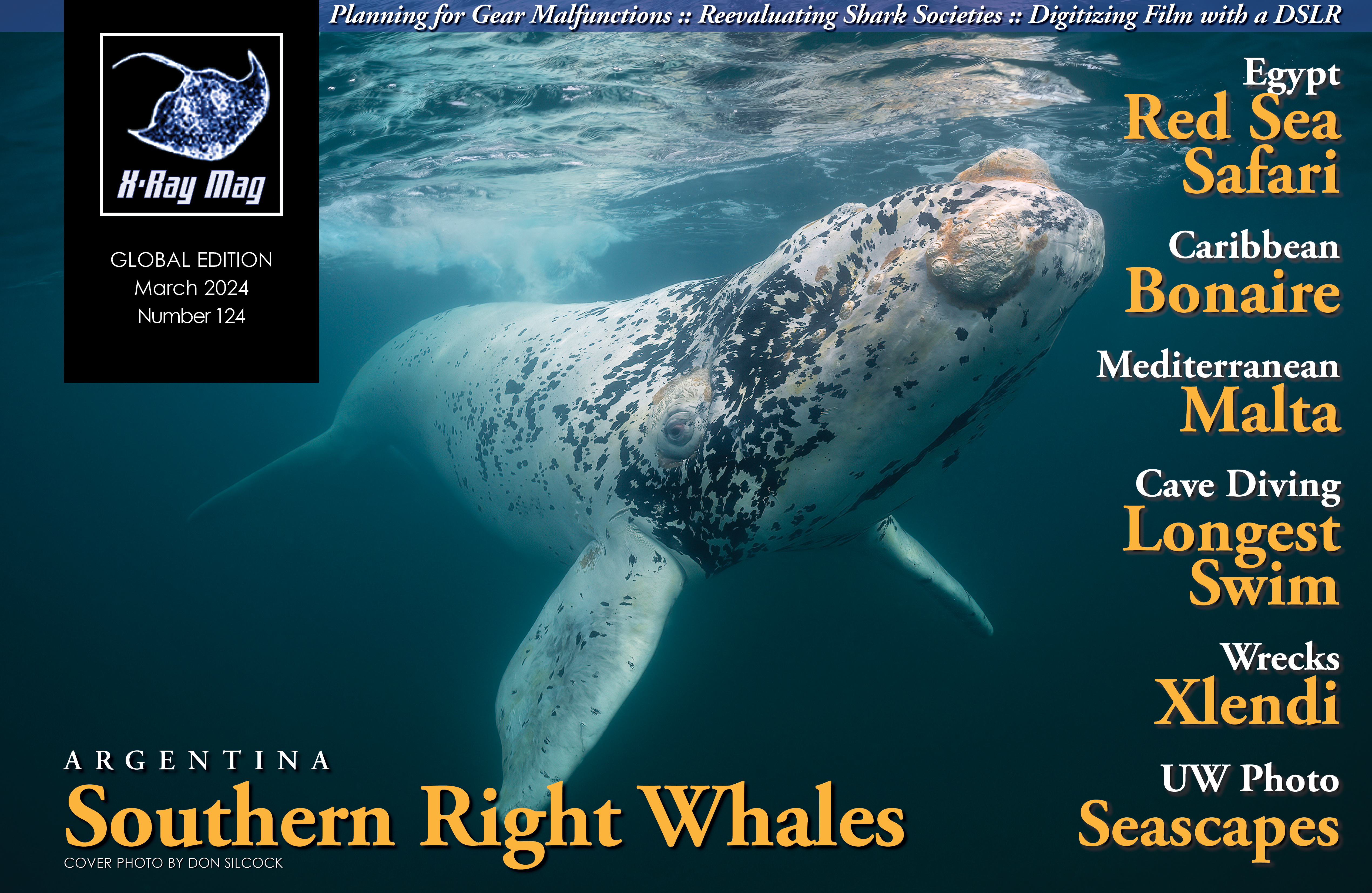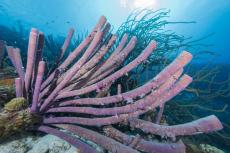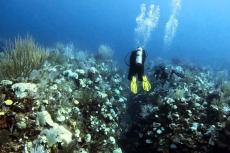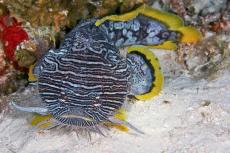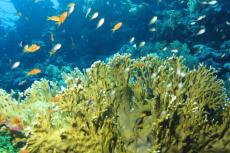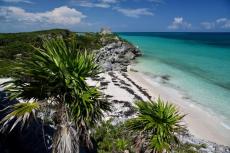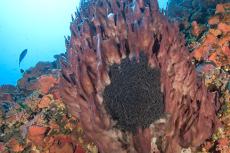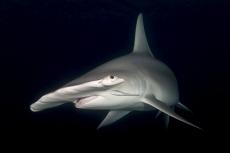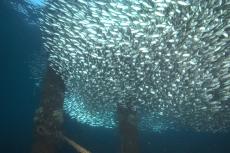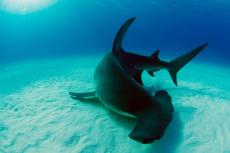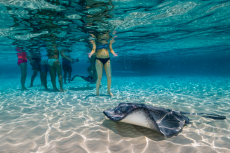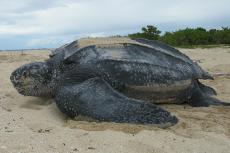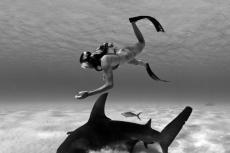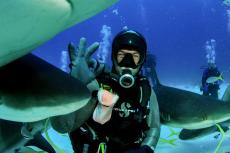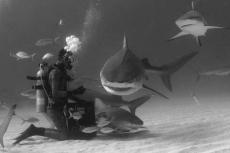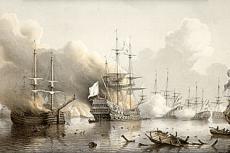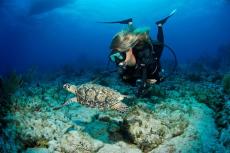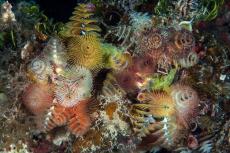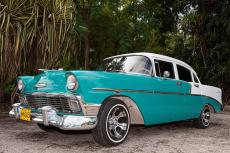A Caribbean island nestled in the Leeward Antilles, warm and sunny Bonaire is a diver’s paradise with lots of shore diving and easy-to-reach fringing reefs, attracting divers at all levels who wish to explore and enjoy its beautiful reefs and marine life. Matthew Meier shares his adventure there.
Contributed by
As synonymous as the slogan “Lone Star State” is to Texas, the “Great Lakes State” is to Michigan, or the “Sunshine State” is to Florida, the phrase “Diver’s Paradise” is so ubiquitous to Bonaire that it is printed on the license plates. One of the many factors that combine to make Bonaire such a paradise for divers is the island’s equally iconic status as the shore-diving capital of the world. Twenty-four hours a day, seven days a week, divers have the ultimate freedom to blow bubbles at their leisure, whenever and wherever they wish, choosing from over 60 shore dive sites, the vast majority of which are situated on the calm and sheltered leeward side of the island.
My wife and I were fortunate to visit Bonaire this past summer and experience a bit of the diver’s paradise for ourselves. The civic pride the locals feel for their home country was evident as soon as we arrived. On our flight, there was a team of enthusiastic 7- to 8-year-old baseball players who, along with their coaches and numerous family members, had traveled to St. Louis, Missouri, and finished second in a multinational tournament. Upon our landing at Flamingo International Airport, eight hours later than scheduled due to various delays in Miami, several hundred passionately cheering fans were there, waving banners, carrying balloons and crowding the exit, as a Caribbean steel-drum band played to honor the players’ accomplishments and welcome them home. It was incredible to witness and a wonderful start to our week in paradise.
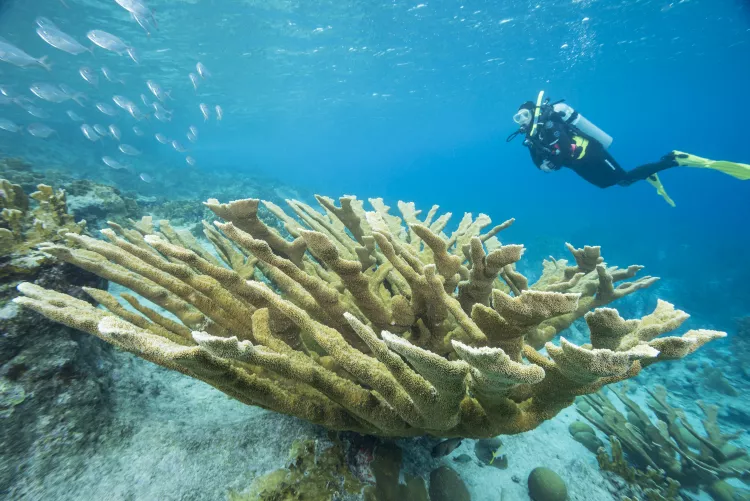
About the island
Located just 50 miles (80 km) north of Venezuela, Bonaire is a Caribbean island that is part of the Leeward Antilles and considered to belong geologically to the South American continent. A component of the ABC islands, along with Aruba and Curaçao, all three islands were formerly members of the Netherland Antilles until its dissolution in 2010. Bonaire now exists as a special municipality of the Netherlands, of which nearly 80 percent of its 24,090 permanent residents are Dutch nationals. With an average air temperature of 82°F (28°C), only 22 inches (56cm) of annual rainfall and a near constant easterly trade wind, the dry tropical climate and lack of rain runoff makes for beautiful days, cool nights and clear visibility underwater, which averages 100ft (30m).
The island has a total land area of 111 sq mi (288 sq km) and stretches 24 miles (38.6km) south to north and between 3 to 5 miles (5 to 8km) east to west. Klein Bonaire, at 2.3 sq mi (6 sq km), is situated a mere 0.5 mi (800m) west of the capital city of Kralendijk. This uninhabited islet is surrounded by a fringing coral reef, providing an additional 26 idyllic dive sites, and its sandy shoreline serves as the perfect nesting grounds for several species of sea turtles.
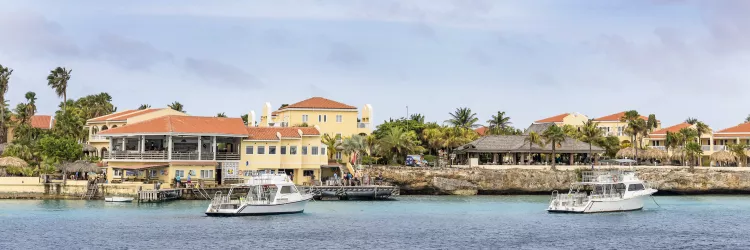
The resort
Our home away from home for the week was a well-appointed and very comfortable one-bedroom apartment, conveniently located near the dive shop and both on-site restaurants, with a lovely balcony overlooking the Caribbean Sea for morning coffee and spectacular sunsets. All of the resort’s accommodations are air conditioned and include a kitchen, so guests have the option of preparing meals for themselves or dining out at a restaurant. We did a bit of both and definitely had fun at the local grocery store trying to decipher product labels in Dutch, as many items were not printed in English.
Both restaurants on the property overlook the water. So, guests can sit with their feet in the sand near the pool bar for afternoon cocktails, sharing the last warmth of the sun with the numerous large iguanas that roam the grounds.
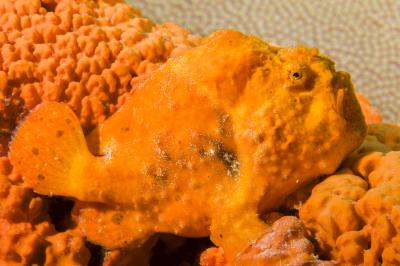
Diving
The morning after our arrival, upon completion of a mandatory dive briefing and filling out the usual paperwork, each diver was given a padlock for a locker in which to store gear for the duration of their stay. At which point, guests were left to their own devices to decide when and where to dive and how to spend their time. The freedom was refreshing and so much more relaxing than having to follow a rigid dive schedule while on vacation.
Diving Klein Bonaire is primarily done off a boat with many operators offering a two-tank morning dive, returning to the dock in time for lunch, followed by an optional single-tank, afternoon dive, typically to a dive site on the main island. To access the plethora of shore dive sites, a rental car can be included as part of the booking package.
Our ride for the week was a shiny, new, manual-transmission, mini pick-up truck with an extended cab for storing our dry effects and cushioning my underwater camera housing. Our host, Buddy Dive Resort, had a unique drive-through service setup for rinsing sandy dive gear and swapping out empty for full tanks of air or nitrox, allowing for uninterrupted diving all day long, with minimal effort. For the utmost convenience, divers can suit up on the dock, adjacent to their lockers, and walk down a short flight of stairs, or giant stride into the fabulous house reef in front of the resort.
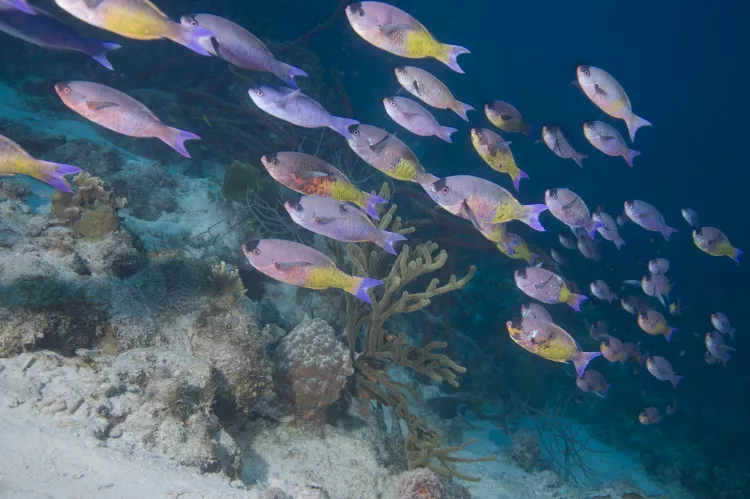
House Reef
The sandy bottom gives way to a sloping coral reef structure, which levels out to more sand past 60ft (18m). The reef has colorful hard and soft corals, elaborate purple rope and tube sponge colonies, pristine sea fans, flowing sea rods and bright orange elephant ear sponges. We passed schools of snappers and grunts, as well as a pair of honeycomb cowfish circling each other in what I assume was a mating display. In the depths past the reef, we even found a southern stargazer buried in the sand, waiting in ambush for an unsuspecting meal to swim past too closely.
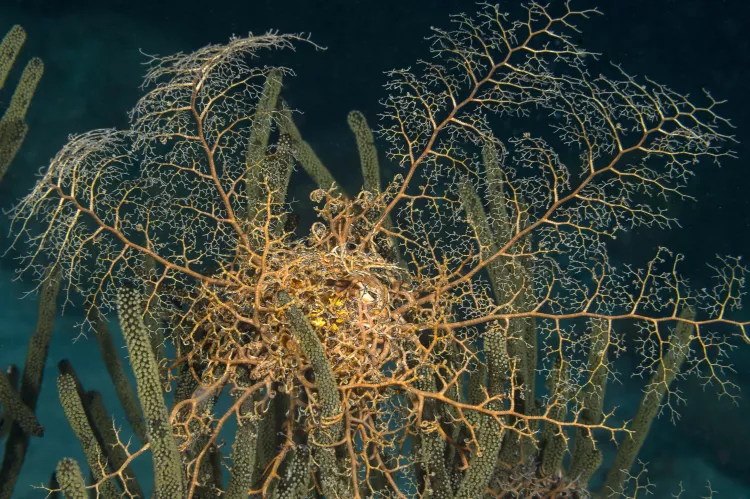
Night dives
If you are a fan of night dives, the house reef offers a special experience. As always, a different set of critters emerge after dark, and it is possible to see octopus, unfurled basket stars and other nocturnal life that may have been hiding during the day.
However, the real stars of the show are the stealthy, 4 to 6ft (1 to 2m) long tarpon fish that have learned to use the divers’ lights to locate food in the dark. The tarpon will swim above or alongside a diver, undetected (more often than not), and then explode out in front of the diver to grab an unsuspecting fish that had the bad fortune of being illuminated by the diver’s torch. Even if you know they are there, the speed of the assault and the instant flash of silver reflecting off the enormous tarpon startles most divers into involuntary screams and gasps. On our dive, I could easily have tracked my wife with my eyes closed, just by following her squeals every time a tarpon made a surprise appearance.
The flexibility to choose from boat dives, shore dives or a house reef in warm, clear waters with limited to no current makes Bonaire an attractive destination for every level of diver. There is even a thriving technical diving community for those that have the training or want to learn how to extend their bottom times or go to deeper depths.
The wild side
For the adventurous, it is also possible to dive the eastern side of the island, known as the wild side, due to it being unprotected from the wind and waves. There are a few shore-dive sites available, but it is more advisable to venture out with an experienced operator for a boat dive. During the months of September and October, the eastern trade winds subside, making the wild side much easier to dive and temperatures much warmer on the island. The locals say that the fish are bigger, there are lots of sea turtles and there is a better chance to see pelagic critters, such as sharks and eagle rays, on that side of the island.
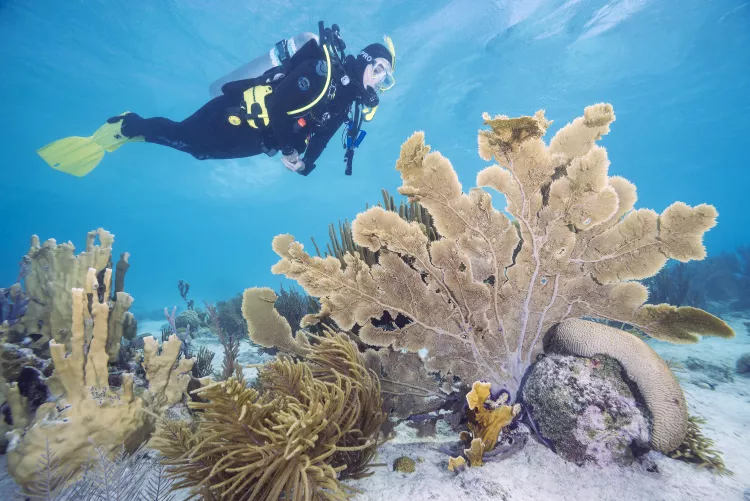
Shore dives
A simple, yellow, hand-painted rock, with the name of the individual shore dive, is used to designate the parking and/or entry location for each dive site, as you navigate the coastal road running along the western edge of Bonaire. There are countless resources providing specific details on what you can expect to see at each site, along with advice on the easiest places and ways to get in and out of the water.
Some entries or exits are less challenging to navigate at high or low tide, some sites have substantial stairs to negotiate to get to and from the water (i.e., “1000 Steps”—technically, only 68), while others are easy all the way around. Plus, with so many locations available, divers can opt to drive past a crowded parking lot and often have the next dive site all to themselves, just a little farther down the coast.
The Salt Pier. The Salt Pier is one of the many iconic shore dives I would highly recommend during a visit to Bonaire. Topside views of the pier itself, the surrounding salt flats, multicolored evaporating pools, foraging pink flamingos and the huge piles of salt are worth the drive by themselves.
Located toward the southern end of the island, the pier is still actively used to load salt onto cargo ships and is off-limits when a vessel is docked. Happily, the locals can let you know when the pier is expected to be occupied, so you can plan accordingly. There is ample parking north or south of the pier and a rocky step down into the water, giving way to a gradually sloping sandy bottom before you can submerge.
We discovered a large school of bonefish hovering over the sand almost as soon as we got underwater, along with a pair of Caribbean reef squid, as we swam beneath the pier itself. The vertical pilings are covered with various species of colorful sponges and encrusting corals, and if you dive in the afternoon, there is a chance of piercing sun rays. We had heard tales of Caribbean reef sharks swimming amongst the pilings and, on this dive, personally witnessed southern stingrays and scorpionfish hiding in the sand, along with a green sea turtle munching on sponges towards the end of our dive.
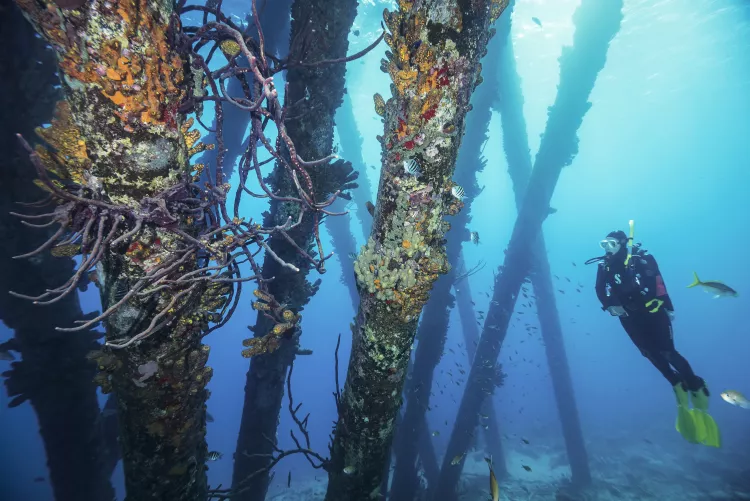
Hilma Hooker. A half dozen dive sites farther north of the Salt Pier is the Hilma Hooker, Bonaire’s lone shipwreck of any substantial size. This 240ft (73m) former cargo freighter had a checkered past and was purposely sunk for divers by the local authorities in 1984. The wreck now sits on its starboard side with its bow in roughly 100ft (30m) of water, situated between the double-reef system that exists at the southern end of the island. The bridge and holds are open to explore, and the propeller is still intact, all of which are decorated with colorful sponges.
If exploring the wreck from shore, divers can make a staggered ascent and visit the inner portion of the double reef while gradually making their way back to the beach. The Hilma Hooker has multiple mooring buoys and may be easier to dive from a boat, as dropping down the line without the need for a surface swim would allow for more breathing gas at depth.
Marine park
The locals have adopted tourism dollars as a major portion of Bonaire’s economy and are fully committed to taking care of the environment that attracts its visitors. As such, the reefs, seagrass and mangroves on both Bonaire and Klein Bonaire are protected as part of the Bonaire National Marine Park, which is managed by the Stichting Nationale Parken Bonaire (STINAPA) national park foundation. The marine park was founded in 1979 and fully encircles Bonaire and Klein Bonaire, stretching from the high-water mark down to 200ft (60m), incorporating an area of 10.4 sq mi (27 sq km).
Anyone wishing to use the park system must first purchase an annual pass, which is valid through the end of the calendar year, and agree to abide by regulations put in place to safeguard Bonaire’s natural resources. For divers, those include performing a mandatory checkout dive for proper weighting and buoyancy, using a surface marker buoy, wearing reef-safe sunscreen, not wearing gloves, not using muck sticks, not touching the reef, not kneeling in the sand, not using chemical light sticks and ultimately leaving no trace behind after a dive. In my humble opinion, we should all strive to leave every dive site as we found it, regardless of where in the world we dive. To further shield the reefs, STINAPA maintains an extensive array of mooring buoys, as it is prohibited for boats to anchor within the marine park.
Morning boat dives
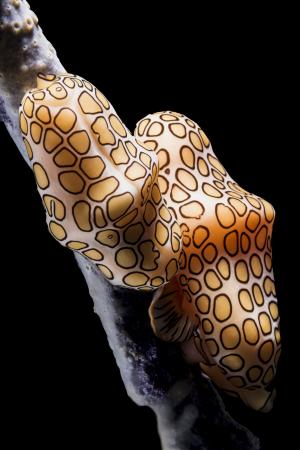
We took full advantage of the morning boat dives to Klein Bonaire, soaking in the splendor of the huge colonies of purple tube sponges, massive sea rods and intricate sea fans. As noted, sea turtles are often found around Klein, and shortly after getting in the water, we spotted a small green sea turtle breathing air at the surface. After a few more breaths, it drifted back down to the reef to feed, and for a few magical moments, allowed us to swim alongside it.
We also had a nice encounter with a large school of blue runners, and one overly inquisitive spotted porcupine fish, which seemed fascinated with its reflection in my dome port. Large French angelfish were prevalent at many of the dive sites, along with schools of reef fish, such as brown chromis and creole wrasse.
Macro life
While wide-angle vistas are nearly everywhere, Bonaire is also well known for its diverse and abundant macro subjects. In keeping with the island’s theme, brightly colored flamingo tongue sea snails (a member of the cowry family) were prevalent on sea rods and sea fans. Christmas tree worms as well as tube worms were found burrowed into hard corals, and there was a large variety of gobies and blennies hiding on the reef.
Shy and elusive seahorses could be found by a trained eye, though you might need to ask a resident expert to point them out. We even spotted several frogfish of varying colors to match their host sponges tucked into the reef.
In the shallow sandy bottom near the shore, before you even reach the reef, look for small holes that may be home to the yellowhead jawfish. The males of the species mouthbrood their eggs, and with a lot of patience, you may get to see a mouthful of little eyes looking back at you.
Coral propagation
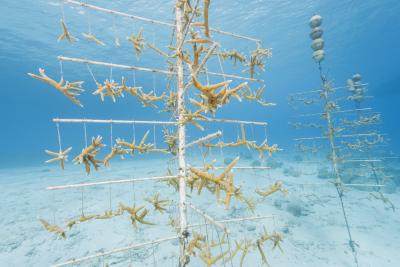
To further assist in the natural recovery of the island’s coral reefs and expand their genetic variety, Reef Renewal Foundation Bonaire (reefrenewalbonaire.org) has been propagating and outplanting corals through active restoration since 2012. Starting with a few corals and only two small nurseries, the project has grown to include nearly a dozen partner dive shops, 11 species of propagating coral, extensive education and outreach programs, international research collaborators, countless volunteers, hundreds of coral nursery trees (with an 86 percent survival rate for replanted corals at six months), and over 55,000 outplanted corals repopulating Bonaire’s reefs.
I photographed several of the coral nurseries on the house reef, as Buddy Dive Resort was one of the first to partner with Reef Renewal Foundation Bonaire and now offers its guests educational programs and volunteer opportunities to get hands-on experience with the process. We also had the pleasure of visiting two of the coral outplanting dive sites, Jeff Davis Memorial and Carl’s Hill, where we explored impressive expanses of transplanted staghorn and elkhorn corals, respectively. The Jeff Davis Memorial staghorn colony began with roughly 2,000 coral fragments, and over the past 10 years, has expanded to cover an impressive 11,000 sq ft (1,000 sq m).
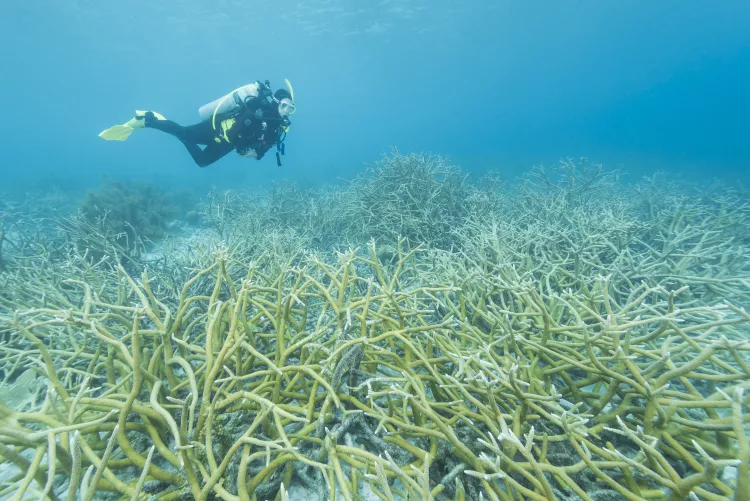
Stony coral tissue loss disease
Over that past decade, the reefs on many islands in the Caribbean have been experiencing an outbreak of stony coral tissue loss disease (SCTLD) since its discovery off the coast of Florida in 2014. The disease spreads rapidly and affects over 20 coral species, causing tissue loss, a white-bleaching effect and ultimately death for the corals. This past year, SCTLD finally made its way down to Bonaire, and so far, is affecting nine of the local coral species, primarily star, maze and brain corals.
In an effort to slow the spread of the disease and help protect the island’s coral reefs, STINAPA has developed procedures for decontaminating dive gear, as well as an extensive monitoring system to keep track of each dive site’s degree of infection. Divers are asked to disinfect their gear between dives and follow a stoplight system by visiting green dive sites, with less evidence of SCTLD, before exploring orange or red sites, showing greater concentrations, on any given day. The status of every dive site is updated daily and posted at each resort, as well as on the STINAPA website, along with the latest best-practice guidelines to safeguard the reefs.
We were very impressed with all of the policies in place to help reduce the risk of spreading this disease, and honestly, the little bit of extra effort in caring for our gear or planning our dive day was well worth the reward of diving Bonaire’s incredible coral reefs. We would go back tomorrow without thinking twice about it, because as you can see from the photos, the reefs are full of countless healthy corals, tons of cool critters, schools of fish, fantastic sponges and vibrant colors.
Conservation
The preservation and conservation of nature in the Netherlands Antilles began many decades ago with the creation of the STINAPA N.A. foundation in 1962, and one of its first objectives was to protect the breeding grounds of the Caribbean flamingos on Bonaire. The Netherlands Antilles’ first sanctuary, Washington Park, was also created on Bonaire in 1969, and over the next 10 years, funds were raised to purchase the neighboring Slagbaai plantation, further expanding the park in 1979 to its present form, now named the Washington Slagbaai National Park. A year later, the foundations were localized to each island and STINAPA Bonaire was born.
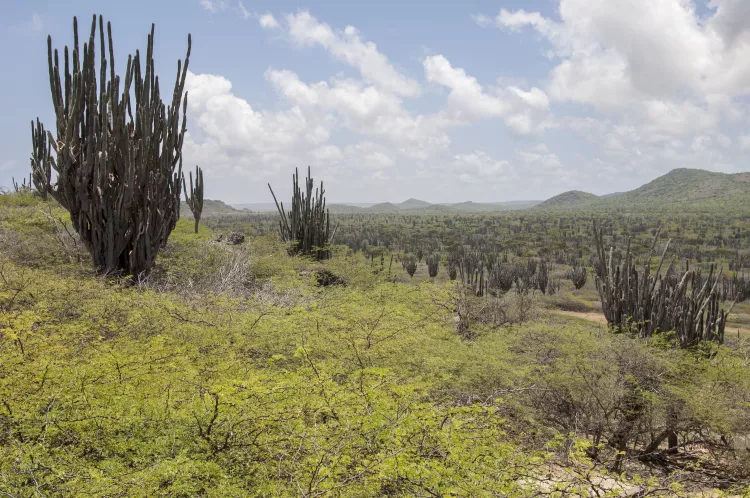
Topside activities
Topside activities abound on Bonaire, making this a fantastic destination for both the divers and non-divers in the family.
Washington Slagbaai National Park. At the northern end of the island, the aforementioned Washington Slagbaai National Park is a great place to get outdoors and spend the day. Take a slow drive along its dirt roads past vast expanses of cactus and brush, rolling hills, and inland lakes playing host to pink flamingos. Wild goats and donkeys roam the wilderness (and are often found on the roads), along with lizards, iguanas and several species of birds, including the crested caracara and endemic brown-throated parakeet.
Lighthouse and salt flats. At the far southern end of the island is the Willemstoren lighthouse and the Cargill solar salt flats, which support a sanctuary for an even larger concentration of flamingos. Multiple sets of slave huts still stand here, illustrating the living quarters for the former workers, who once toiled to produce one of Bonaire’s major exports—sea salt.
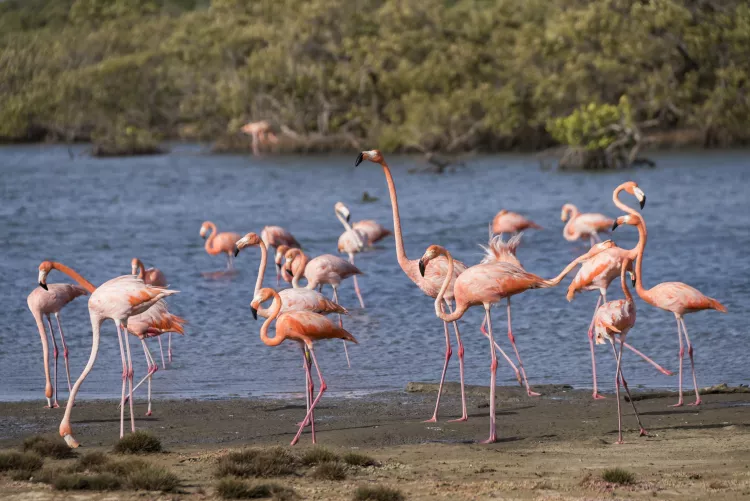
Lac Bay. Lac Bay offers windsurfing and kitesurfing, along with mangrove kayak tours; nearby is the expansive, and not to be missed, wild donkey sanctuary. There are miles of hiking and mountain-biking trails, caves to be explored, beautiful white sandy beaches and stunning reefs for snorkeling. The island has a fantastic collection of food trucks that make for a perfect snack stop between shore dives, numerous fine dining and casual restaurants, delicious ice cream shops and plenty of shopping, all wrapped up in a warm, inviting atmosphere.
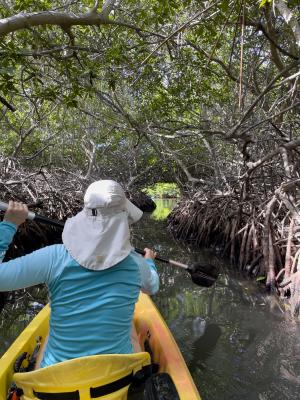
We spent our last morning kayaking and snorkeling the mangroves at the edge of Lac Bay, and upon arrival, were treated to a flamboyance of pink flamingos wading in the shallows while foraging for food in the beautiful morning sunlight. In a compound behind the Mangrove Info Center, dozens of orphaned or lost juvenile flamingos were cared for by the Bonaire Wild Bird Rehab Center. Once strong enough, the fuzzy, grey fledglings were released back into their natural habitat to rejoin the flock.
The two-hour snorkel tour was relaxing and informative, and the mangroves were fascinating to see up close. Their crisscrossing root system beneath the water’s surface acts as a tightly packed maze that protects the juveniles of numerous fish species from larger predators, which are unable to fit in-between the gaps. It was a fabulous experience and a great way to start our dry day before packing to fly home.
Final thoughts
As always, our week came to an end far too soon, and as my wife laments on every trip, “I just want one more day!” Frankly, I would have loved to have stayed another week or longer, but sadly, that was not to be. We packed a lot of adventures into our short time on Bonaire, and I am already looking forward to a return trip. The island offers a little something for everyone, and for divers, there is no easier place to get underwater. If you have not been to Bonaire yet, I highly recommend a visit, and for those that know of what I speak, it is time for a return trip to the “Diver’s Paradise.” ■
Special thanks go to Buddy Dive Resort (buddydive.com) for hosting this adventure and to Tourism Corporation Bonaire (bonaireisland.com) for their assistance with logistics and flights. The author also thanks Scubapro (scubapro.com) and Blue Abyss Photo for their assistance with underwater dive and photo gear.
References: Reef Renewal Foundation, Stichting Nationale Parken Bonaire, Wikipedia

